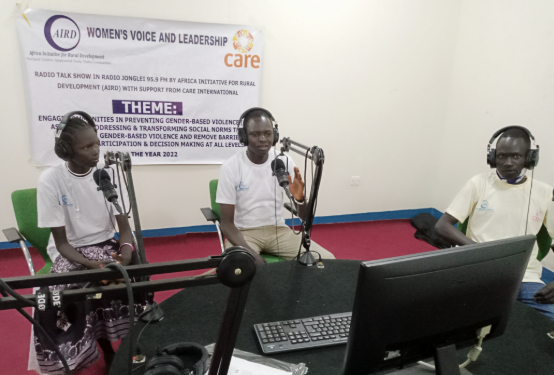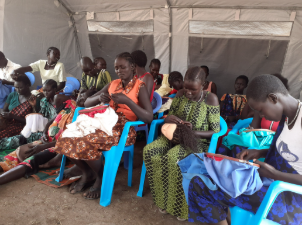Our Approach


To deliver effective support in South Sudan, where challenges are significant and vary by state, we often adopt a multi-faceted approach. The strategic approaches we uses to administer programs in education, health, food security and livelihood, peacebuilding, and agriculture in South Sudan are detailed below:
1. Education Programs
- Community-Based Approach: Recognizing the lack of formal school infrastructure, organizations often set up community-based learning centers that are easily accessible to children in rural and conflict-affected areas.
- Capacity Building: Training local teachers and education volunteers ensures sustainable impact. Teachers receive support in pedagogy, psychosocial support for trauma-affected children, and adapting curricula to local needs.
- School Feeding Programs: In areas with high food insecurity, school feeding programs are integrated to incentivize attendance, improve nutrition, and enhance learning outcomes.
- Emergency Education Kits: In areas impacted by conflict or displacement, emergency education kits (e.g., school-in-a-box) enable children to continue learning despite the challenging environment.
- Community Engagement: Partnering with community leaders, parents, and local governments is essential for buy-in, support, and security for educational programs.
2. Health Programs
- Mobile Clinics and Outreach: Due to the remoteness of many communities, mobile clinics are used to reach areas lacking health facilities. Outreach teams provide essential services like immunizations, maternal care, and treatment for common diseases.
- Integrated Health Services: Health programs often combine services such as maternal and child health, immunization, and nutrition, especially in areas where health facilities are minimal. This holistic approach helps maximize impact with limited resources.
- Community Health Workers (CHWs): Local health workers are trained and equipped to provide basic healthcare and health education within their communities. CHWs are crucial for building trust and encouraging healthy behaviors.
- Partnerships with Local Health Facilities: In areas with health facilities, organizations often strengthen existing health centers by providing training, medical supplies, and logistical support to ensure reliable healthcare delivery.
- Mental Health and Psychosocial Support (MHPSS): Given the high levels of trauma in conflict-affected populations, MHPSS is incorporated to support mental well-being alongside physical health.
3. Food Security and Livelihood Programs
- Emergency Food Assistance: In regions facing acute food shortages, food distributions (both in-kind and through cash-based assistance) provide immediate relief. Cash assistance is used where markets are functional to allow flexibility and support local economies.
- Resilience Building: For long-term food security, programs focus on skills training for income generation, such as vocational training, small business support, and cash-for-work opportunities. This approach fosters resilience and reduces dependency on aid.
- Seed and Tool Distribution: Organizations often provide seeds, farming tools, and training to households to help them grow their own food, promoting self-sufficiency and reducing the need for food aid.
- Village Savings and Loan Associations (VSLAs): These community-managed savings groups empower people to save and invest in small businesses, providing economic security and supporting recovery from economic shocks.
- Market Development and Support: Where possible, organizations help develop local markets by linking producers to buyers, supporting transport logistics, and advocating for fair prices.
4. Peacebuilding Programs
- Conflict Resolution and Mediation: Peacebuilding initiatives often involve training local leaders and community members in conflict resolution and mediation. This promotes peaceful dialogue and helps communities resolve disputes.
- Youth Engagement and Inclusion: Recognizing that young people are often affected by and involved in conflicts, peacebuilding programs focus on engaging youth through education, vocational training, and community involvement to redirect their energies positively.
- Intercommunal Dialogue: In areas with intercommunal tensions, facilitated dialogue sessions bring together community representatives from different backgrounds to discuss shared challenges and build relationships.
- Trauma Healing and Reconciliation: To address the psychological toll of conflict, organizations support trauma healing workshops and activities aimed at reconciliation, helping individuals and communities move toward peace.
- Local Peace Committees: These are established to mediate conflicts at the community level and prevent escalation. Peace committees are essential for sustainable peacebuilding as they provide ongoing local support.
5. Agriculture Programs
- Climate-Smart Agriculture: Programs often promote climate-resilient farming practices such as drought-resistant crops, soil conservation techniques, and rainwater harvesting to adapt to unpredictable weather patterns.
- Farmer Field Schools (FFS): These practical learning spaces bring farmers together to learn improved farming techniques, pest management, and crop selection tailored to local conditions.
- Livestock Health and Management: Livestock plays a central role in rural livelihoods, so programs often include animal health services (e.g., vaccinations, veterinary support) and training in improved livestock management.
- Irrigation Support: Where feasible, small-scale irrigation projects are introduced to improve crop yield and resilience against drought, allowing communities to farm year-round.
- Market Linkage Support: To make agriculture profitable, organizations connect farmers with buyers and markets, sometimes establishing cooperatives to enable bulk selling and better prices.
Cross-Cutting Strategies
- Community Engagement and Ownership: Each program is implemented with strong community involvement, including consultations with community leaders, training of local staff, and partnership with local government and traditional leaders to foster community ownership and long-term sustainability.
- Capacity Building: Programs emphasize capacity building for local communities and government staff. This includes training, skills development, and resource provision, ensuring that communities can sustain improvements independently over time.
- Gender Sensitivity and Inclusion: Programs integrate gender-sensitive approaches to empower women and ensure that vulnerable groups, such as women-headed households and youth, benefit equitably from program activities.
- Monitoring and Evaluation (M&E): Robust M&E systems are set up to track progress, measure outcomes, and adjust strategies. Data collected from M&E processes helps improve program effectiveness and accountability.
- Collaboration with Government and Other NGOs: Coordination with the South Sudanese government and other NGOs is essential for avoiding duplication, pooling resources, and maximizing impact. This collaboration allows for coordinated efforts across different sectors.
This holistic and integrated approach is crucial for creating sustainable and meaningful impacts across South Sudan’s diverse and challenging landscape.
© © 2021. All Rights Reserved. AIRD. Designed & Developed by Dynamic Consult
